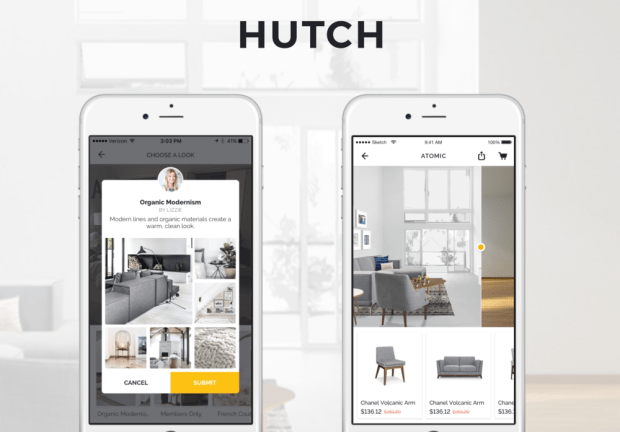How Homee Became Hutch And The Importance Of The Right Pivot

While most CEOs when they’re asked give a long and complex explanation for their business and why it is the single most innovative idea in the history of human endeavors, Hutch co-founder and CEO Beatrice Fischel-Bock had a much simpler explanation for the enthusiasm her site Hutch has generated.
“It’s playing dress-up for your home.”
And actually that is a description that is more or less as accurate as it is succinct. The Hutch app once downloaded gives users a chance to preview a new decorative style for a room in their house and then directly purchase all the elements of the design. To make that wonder happen users upload a picture of the room that exists as is, select a design filter like “French couture,” “eclectic chic,” “urban industiral” or the classic “boho.”
The photo is then run through both proprietary technology and an interior designer. The user gets back a photo of the space redesigned with 24 hours. From there, the user can accept the design and start shopping or decide that it ’s not quite them and try another design feature. The virtual room design is free. Hutch makes its money on the sale of the furniture (which it buys wholesale).
This was not always quite the way things were supposed to go. Hutch is actually the culmination of a long effort on the part of its CEO/co-founder. Hutch’s first incarnation was called Zoom Interiors, and it created a web-based interface to connect designers with customers. Version 1.0 got a hearing on Shark Tank, and though the model was generally critiqued for being non-scalable, they did manage a deal with a shark.
But that deal fell through.
But Fischel-Bock and team were not to be daunted. Instead, after picking up interest from Tinder founder Sean Rad, Zoom became Homee. Homee had a new business model, seed funding from Rad, Ben Silverman and Scooter Braun and as of last summer a successful series A round worth $5 million led by Peter Thiel’s Founders Fund.
The new model was designed around chat. Users download the app to real-time talk through their design plans with interior designer and then by their furniture directly from Homee. And it was popular, growing fast and had one problem, according to its CEO. It was too expensive to maintain profitably, and it was providing the wrong service to its users.
“We were growing more than 100 percent month over month, and we just found that it wasn’t a sustainable, scalable process on our end,” Fischel-Bock says. “We wanted to keep it a free experience.”
But to make it profitable, they would have had to charge, Fischel-Bock said, and that idea was a non-starter. It was also, they realized, unnecessary because the most expensive part of the app to maintain – the chat function – was also the least useful to its users. Users didn’t really want to talk about a new design for their living room, so much as they wanted to see it, as room visualization was already part of what Homee was all about. So the founding team decided to pivot yet again, and refocused on that popular visualization focus of the business.
New focus called for a new name – and Hutch was born.
At present, the process isn’t wholly automated. The decorating and design is done by hand — it takes about 20 minutes for a designer to create one room, and the team returns all visualizations within 24 hours of submitting them.
The goal, as Hutch builds toward scale is to automate more of that process so that the new designs come in almost instantly.
“We realized that we could keep our costs down for the user, for us, if we focused on this piece of the experience that worked so well [and] that’s much easier to automate from a technology standpoint. So what we’re working on now is a proprietary technology to actually render these rooms instantaneously so you can edit while you’re using the app.”
The biggest lesson, Fischel-Bock said, and the hardest lesson the team had to learn is that the customer is always right – and that the systems and services need to be built around them. Talking about design was enjoyable for people who were already interested in talking about design. But for people just looking to redecorate their living rooms – they just wanted to know what it would look like and how to make it happen.
“Mostly we learned how important it is to listen to users. They’re the most important people because they’re the ones who actually can tell us how they feel about it. We can talk all day until we’re blue in the face about what we think people will like, but in the end, the user tells us.”
And Hutch has listened – a lot – and been through a few different variations trying to give those users exactly what they want.
